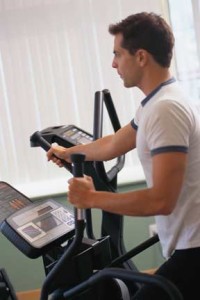 Why not turn part of your exercise routine into a mediation practice? Think of it, multitasking that is HEALTHY and ENJOYABLE, stress releasing instead of stressful!
Why not turn part of your exercise routine into a mediation practice? Think of it, multitasking that is HEALTHY and ENJOYABLE, stress releasing instead of stressful!
When I was on the treadmill, stationary bike or rowing machine at the gym I would often daydream, a pleasant enough way to make the time go faster, but after I got into practicing meditation I would switch back and forth between daydreaming and a breathing meditation. I found when I focussed on my breathing for part of the work out, the exercise seemed a little less exhausting, and I felt a bit calmer afterwards even though I worked as hard.
I’ve since found out that deep breathing helps to oxygenate muscles during exercise which is beneficial for reducing physical stress. Couple that with focussed breathing and you have a recipe for stress reduction.
This is how I went about it. (If you are new to exercise check with your doctor to make sure this exercise meditation is appropriate for you.)
Preparation
- Choose an exercise that is simple, repetitive and does NOT require your full attention. I would not want you to injure yourself by focussing on your breath when you should be focussing on your interaction with the equipment!
- As you exercise find a pace that works for you. Breath in deeply, filling your belly and your lungs. Most people just fill their lungs, but you will have more stamina and be less likely to end up panting if you breath deeply.
- If you are working on a machine like a rowing machine, breath out at the point of exertion (in this case it would be as you pull handles away from the machine). Breathing out at that point seems to bring more strength to the movement, as well as making it easier to take a deep breath in during the easy part of the exercise (as the handles returns to the machine).
- Adapt your breath to accommodate the speed you are working at. For example if you are walking very quickly on a tread mill breathing out with every step you could cause you to hyperventilate, instead you would breath in fully over several steps and breath out over several steps. Adapt your breathing pattern to suit your work out.
Now for the meditative part
- Once you have found your exercise and breathing rhythms, bring your focus to your breathing, paying attention to details like the temperature of the air, how it feels as you breath in, and the sound it makes as you exhale. Let your thinking mind take a break while you pay attention to the sensations and action of breathing.
- Notice if you are carrying any extra tension in your body, (neck and shoulders for example).
- As you breath in, imagine your breath is carrying extra oxygen to any tense areas of your body. As you breath out imagine you are breathing out that tension. Continue this for a few breaths, you may be surprised to find the tension really does ease up.
After your work out
- Make sure to stretch the muscles you have just used. As you do this, once again practice deep breathing. This time as you breath in, imagine the oxygen flowing into your tired muscles helping them to recover. If you hold the stretch for a few extra seconds you may find that you can relax into the stretch a bit further as you breath out. Never push it.
If you would like to read more about effective breathing during exercise (sans the meditation part) sparkpeople has a great section about proper techniques.
To your health!
